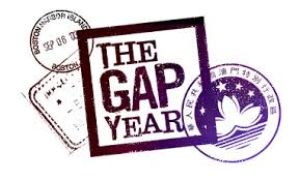Deferred admission allows students preparation time for college
June 26, 2014
After four years of high school and the stress of senior year, a commitment to four years of higher education can seem daunting to incoming freshmen. But a growing trend among many top name colleges and universities in the United States is accepting the concept of a deferred admission. In some cases, students actively enroll in the college of their choice, yet are given extra time to prepare for the college commitment.
This is not time simply spent catching up on Netflix shows or conquering the next level of a video game. Each of these programs encourages their students to gain life experience before studies resume. They can then enter university life refreshed, aware of the responsibilities of adulthood and ready to tackle the challenge of a college education.
Kristen White is a deferred admission special consultant for many college admission programs. As a member of the Independent Educational Consultant Association, she published a book in 2009 titled “The Complete Guide to the Gap Year: The Best Things to Do Between High School and College.”
White defines the gap year as “a break from formal education in order to become immersed in another culture, to volunteer domestically or abroad, to gain experience and maturity, to improve your skills in a sport, language, the arts, or academics, or take on some combination of any of these things.” She encourages students to explore the possibility of a gap year to further determine their goals for their upcoming college career.
In some cases, a young adult who selects a gap year program is considered a college scholar. The initial selection of their education will take part away from the classroom in order to garner professional experience. Even if a deferred admission path is selected independent from a structure program, the experiences and advantages of a gap year are still available.
At 19 years old, Maggie Newport, Topeka resident, is currently preparing for a trip to Bismarck, N.D. to attend the University of Mary this fall. There she plans to major in history education and minor in Catholic studies. She graduated in 2013 as a homeschool student. Her original plans were to attend the University of Saint Mary last fall.
However, after a discernment process, her plans changed. Her gap year was different than most. She spent what would have been her first semester at the University as a Dominican Postulant.
“My days as a postulant were mainly spent in prayer and study,” said Newport.
By December she had discerned that she was not to enter that order. She returned home in January and began working full time.
Newport said there were advantages to waiting a year to attend the University of Mary.
“My experiences of the past year, and of working full time, have given me a great appreciation for the value of a college education,” said Newport. “I can’t wait. I am much more excited about the thought of going to college than I was last year at this time. I think I will treasure of the gift of higher education so much more after the year away from school.”
There are many things to occupy the time created by a gap year. Large varieties of opportunities are offered during a gap year. Humanitarian effort or volunteering for causes internationally or in one’s own neighborhood are some options. On a more career based track is interning in order to feel out the professional field before officially starting school. Regardless of the path chosen, gap years can be highly beneficial for providing perspective.



